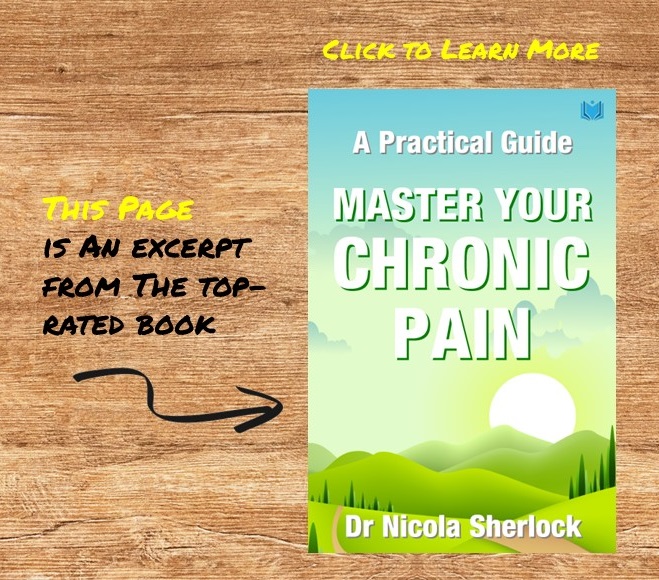Chronic or Persistent Pain
Chronic and persistent pain are both medical terms, and they essentially mean the same thing. When I started my career, chronic pain was the term that was most commonly used by clinicians to describe pain that went on for a long period of time. More recently, the term persistent pain is being used by clinicians, and I consider this to be a better term as it clearly describes the enduring nature of long-term pain. From here on, in this book, I will use the term persistent pain.
So, what is persistent pain? Well, the first important characteristic of persistent pain is associated with the duration of the pain. As the name suggests, this pain persists or carries on. How long does it carry on for? Unfortunately, it can continue for many years. It is not uncommon for me to see patients in my clinic who have had pain for more than 20 years.
Generally, in the scientific literature:
Chronic or persistent pain is regarded as pain that has persisted for more than three months or beyond the stage of expected tissue healing.
The second (and I think most important) characteristic of persistent pain is that
It serves no useful purpose and is not an indication of new or further damage.
So, let’s look at the first part of that sentence. It serves no useful function. Unlike acute pain, it is of no benefit to us. If I took out a magic wand and got rid of your pain, I am sure that you could live a very normal life without it. In fact, I would guess that you would give me a lot of money to use that magic wand on your pain!
The second part of the sentence is a little harder to believe. Persistent pain is not an indication of new or further damage. When I tell my patients this, they often look at me in disbelief – surely Nicola does not know what she is talking about! I can easily appreciate how this is difficult to accept. As I said earlier, from a young age, we have learned about pain. By the time of our first birthday, we have experienced pain a number of times. For the vast majority of us, the pain that we have experienced in our earlier years has been acute pain, and it is not helpful to use acute pain as a gauge to understand persistent pain. Persistent pain is different from acute pain, and the characteristics associated with acute pain (falling off my bike) do not apply to persistent pain (back pain that has plagued somebody for years).
Let me tell you a little bit about the latest research in the field of persistent pain. But before we look at the research further, it is important to emphasise a very important research finding:
Persistent pain is ‘real pain’. Even if you have not been given a definitive diagnosis for your pain.
Persistent pain is as real as the pain that I felt during labour and is as real as the pain I felt last night when I burned my hand doing the ironing!
Unfortunately, it can be very difficult to find an exact physical cause for some people who have persistent pain. People can have really severe pain, but nothing shows up in x-rays or scans. To further add to the confusion, even if doctors can pinpoint physical changes on a scan or x-ray, it might be still impossible to say if this physical change is the cause of the pain. For example, a doctor can have scans belonging to two different patients. The patient who has no pain or very mild pain can have physical changes on their scan, while the patient who has severe pain may have nothing significant evident on their scan. This finding just serves to highlight how complex persistent pain is, and also shows us that sometimes scans or x-rays don’t provide much valuable information.
One of the reasons that scans and x-rays may not paint the full picture about persistent pain is due to the fact that pain changes the way internal pain messages are sent to the brain, and a scan or x-ray cannot show these changes.
The latest research has shown us that when a person has persistent pain, there are changes in how their internal pain messaging system works. These changes affect two things:
1. How pain messages are carried around the body.
2. How the brain makes sense of the messages.
Turning Down the Pain Volume
Even though research on persistent pain is constantly being carried out all over the world, we still don’t know how to ‘turn off’ persistent pain. However, we have learned a lot of useful information about pain. While we do not have the ‘off switch’ for persistent pain, we do know a lot about the ‘volume dial’, or how to turn the volume of your pain up and down.
***
To learn more about chronic or persistent pain management, check out Master Your Chronic Pain: A Practical Guide by Dr Nicola Sherlock


